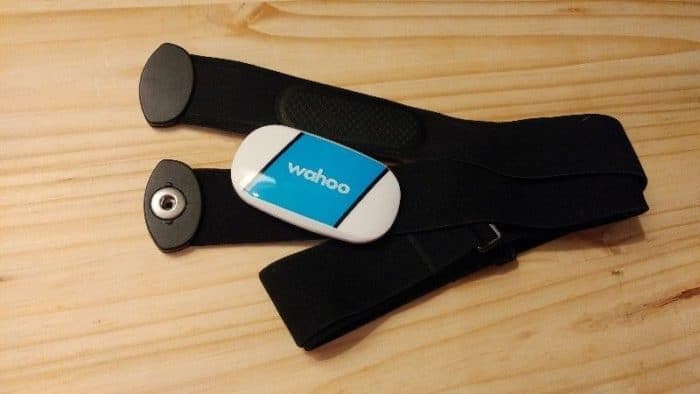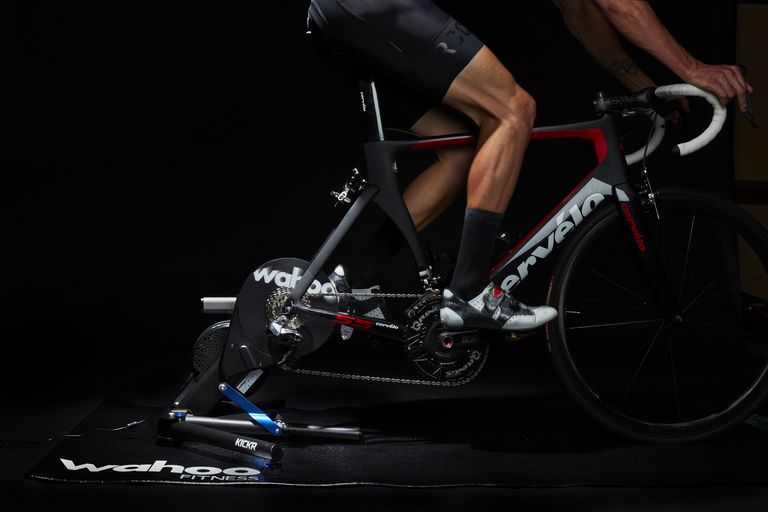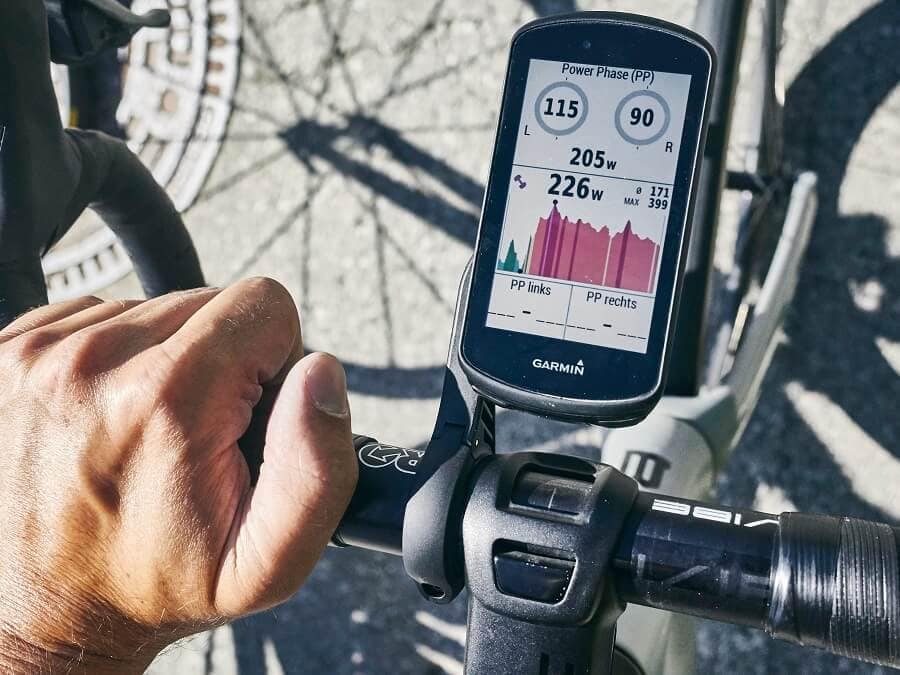How to Increase Your Power Output and Climb Faster
I’ve never been a good climber. And if you’re reading this, you may not be great at it either or are just looking to improve your climbing times. Some riders make it look so easy.
How do they do it? Are they just born with it?
While some received the gift of golden legs (and lungs) at birth, the rest of us have to work at it. Natural body physiology plays a large role, but even heavier or taller riders can improve their times and power output with some hard work, a bit of strategy, and a change of mental attitude.
Are you ready to climb better? Then read on.
Do Multiple Repeats
Let’s be honest, this is going to hurt.
Nobody said it would be easy. It’s time to toughen up mentally too. If you want to climb hills better, train on them, simulate them at least.
Multiple repeats will teach your body to generate greater aerobic capacity, deal with the residual lactic acid, and deliver more functional threshold power.
Start with repeats of 8 to 12 minutes at your threshold on a 4 to 6 percent grade. Push yourself above your max for 1 to 3 minutes if you can. If you can’t do it immediately, work towards it.
If you’re chasing a specific segment, choose intervals based on the time you’re after and do them 1-2x/wk, i.e.: 2 x 20’ (min), 3 x 10’ and 4 x 5’.
Study the Climb
Study the climb on Strava or the app you use. You probably know the climb already, but if not, get out there and do a recon run.
Ride it a few more times at different intensities with a critical eye, examining the terrain and learning the pitfalls along the way.
- Where is it the steepest?
- How long is that section?
- Is there a place to recuperate on the way up?
Note your times trying different strategies, speeding up in some sections, and recuperating on others.
My preferred app shows me all rider times on the segment. I find the ones closest to me in the rankings and try to pick them off one at a time. It gives me achievable short-term goals and keeps me motivated as I improve.
Read More : Why Pro Cyclists Train at Altitude?
Pace Yourself
Don’t fall into the trap of going too hard from the start.
If you aren’t disciplined enough to do it on your own, find a stronger rider to pace you up and lead you out near the top. Personally, I ride harder if I’m trying to stay on or catch someone’s wheel. Sometimes I blow up, sometimes not, but it definitely pushes me to improve.
The harder you work, the more oxygen the fast-twitch fibers in your muscles consume to keep you moving. When they can’t metabolize it fast enough to keep up, they expel lactic acid, which creates that burning sensation that pushes you to stop.
Practice pushing through until your body learns to adapt. If you have the budget, a powermeter is the best pacing tool a cyclist can have.
Read More : A Cyclist’s Guide to Powermeters
Find Your Preferred Cadence
Everyone has their own cadence, you need to find yours. 80 to 90 rpm is recommended, but if you’re producing around 250 watts, some may find it too bouncy.
If so, drop to between 60 and 75 rpm. If pushing harder, say above 300 watts, a challenging pace for most everyday riders, a higher cadence is better and more efficient too.
Cadence is easy to track with a dedicated cadence sensor, but not a requirement. You should be able to read yourself and your effort without it, otherwise, you’ll be staring at your bike computer instead of concentrating on the climb.
Find your happy medium between cadence and climbing efficiency.
Use the Appropriate Gearing
If you are having a hard time finding a comfortable cadence, you may need to change your rear cassette or front chainring.
Gearing has come a long way in the last few years and there is an option out there for you. The ideal gearing you choose should be based on your ability and the difficulty of the terrain and will change as you improve.
Rear derailleur cage length may limit the maximum usable rear cog. This varies by brand and groupset. Most short cages will accept a 28T, and even Shimano Dura Ace now makes a compatible 11-30T.
Looking for a few more teeth? SRAM Force has a mid-length cage that accepts an 11-36T.
Read More : Should You Use A Compact Crankset?
Stay Seated
An expression once common in mountain biking is to sit and spin to win.
You hear it less these days, but it’s one I often repeat to myself and perfect for developing climbing skills. Staying seated for as long as possible uses fewer glycogen stores and is more aerodynamically efficient.
When seated, you harness other large and powerful muscle groups like your glutes to help. Standing gives your seated muscles a rest and you a sense of more power, but you’ll be less aero and burn more energy.
If you stand, concentrate on propelling the bike forward and avoid rocking. We want to go up, not side to side.
Read More : How to Prevent (and Treat) Saddle Sores
Remember to Breathe and Focus
It’s natural to be out of breath when you’re working hard. You end up taking quick breaths and pay no attention to how you exhale, but you should.
The trick is to concentrate on controlling your breathing, taking in long, composed breaths, and exaggerating the exhale. It’s the exhalation process that eliminates carbon dioxide from our bodies. This is especially important for long climbs or when at altitude.
As a body becomes anaerobic during climbing, muscles that crave oxygen source carbohydrates for energy. Lactic acid is a waste product of their metabolism process and working muscles fatigue as lactic acid builds.
Controlling your breathing works muscles that are important in increasing your VO2 Max. The more your lungs can efficiently process, the longer and harder you can go.
Loose Some Weight
Losing body weight is the fastest way to improve your climb times and power output. But it’s also one of the hardest, as our bodies reclaim calories after every ride.
Who hasn’t had visions of what you’re dying to bite into as you near the end of an epic ride? And the coffee stops, donut anyone?
It’s difficult, and it gets harder as you age.
There are other ways to lighten the load as you drop those few extra pounds, invest in a lighter bike or wheelset, lose the saddlebag (what are friends for, right?) and carry one water bottle instead of two, or none.
You may be thirsty and stranded on the side of the road if you flat, but you just might grab that segment you’ve been hunting.
Work on the Core Muscles
Being a good cyclist and climber requires more than just strong legs. As we sit and grind our way up the hill, our glutes and core muscles join the party.
You know the glutes, but what are the core muscles?
They are the back muscles that run along our spine and the abdominals in our trunk. Getting the legs and core to function efficiently together will get you up the hill faster.
Building force in your core promotes overall strength and endurance.
On the bike, perform seated and standing efforts with a higher gear at a lower cadence to increase your pedaling force. Efforts like these promote greater muscle endurance in the legs, just space them apart and allow enough recovery time between efforts.
Or do these exercises off the bike.
Read More : 5 Reasons Why All Cyclists Should Practice Yoga
Don’t Stop Near the Top of the Hill
You’re feeling cooked and struggling to hang on when the top of the hill comes into view. You’re proud of the effort you’ve put into the climb and decide it’s okay to sit up and take it easy over the crest. The temptation is high but keep the effort up until you’ve cleared it.
Maintaining your force through those last few pedal strokes will only add to your muscle endurance. If you can, shift into an even larger gear as you near the top. You’ll improve your strength even more and be ready for the descent.
Author Recommended Reads




